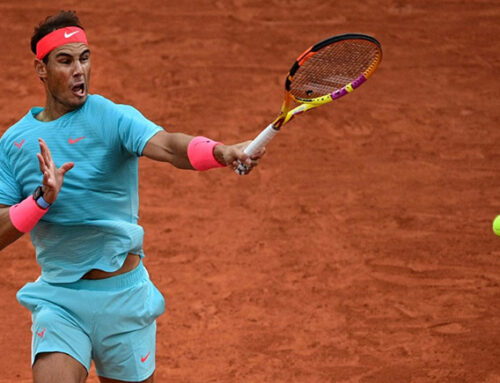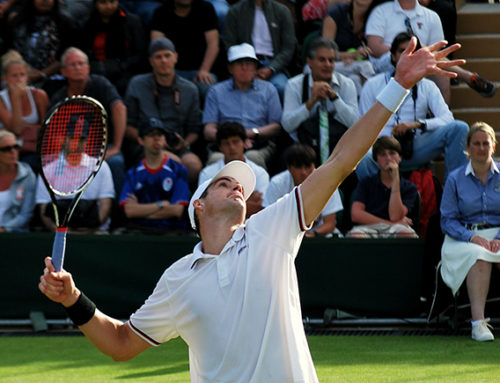Putting together a college recruiting video for tennis is a tricky business. In 10 years of coaching in college tennis, I’ve seen a lot of videos and most of the mistakes a recruit can make at one time or another. I’ve also never seen a well put together guide on how to make a good college recruiting video. So, I decided to write one!
I will put one disclaimer right up front: ever heard the saying “one man’s trash is another man’s treasure”? Some other coaches might value different things than I do when they receive a video. Don’t make the mistake of thinking that this guide is perfect for everyone. However I do firmly believe that following what I write below will net you a great recruiting video that the vast majority of coaches will appreciate. So without further ado!
The 3 Myths Of A College Recruiting Video
1) You have to spend a lot of money. This isn’t remotely true. I am not a video producer. I am not an editor. I am a tennis coach. I’m not watching the video to critique the scene transitions. I want to see the tennis. This can be done cheaply on your home computer with a video camera and Windows Movie Maker. Only pay someone to do it for you if you don’t have a tripod (or a friend with a very steady hand) and video camera – it may be cheaper to do so than buying these things for yourself (but you could always borrow them from someone!).
2) You have to appear perfect. Guess what: you’re not, and the coach viewing your video knows it. If you were, you’d be on the pro tour already making millions of dollars. You’re not a perfect player and you’re not expected to be. Don’t edit out all of your errors, and all of the points that you lost. Don’t cut the video and only shoot from angles that prevent us from seeing the outcome of your shots for the entire video.
3) It has to be long. Not in the least. The truth is it isn’t about the length, it is about what you show. If you can get everything I want to see in five minutes (which would be difficult, but possible) then that’s great. If it takes you 20 minutes then we have a problem (unless you have extended match footage to watch as an option at the end).
The 5 Things Coaches Want To See
1) A brief, informational introduction. I don’t need a five minute introductory speech, but a 30 second clip at the start where you say your name, where you’re from, what year of high school you are in and what you want to study in college is a great start. If you’re outside my recruiting zone or don’t match my major than it’s great to know that right up front. I coach at an art and design college. If you want to study Biomedical Engineering then I want to know that before I invest 10-15 minutes in watching your video.
2) Some reasonably close video of your technique. It doesn’t have to be high-speed footage from 18 angles. But I do like to see your forehand from a 3/4 profile (eg off to the side, halfway up to the net), if not also a straight side and straight frontal view. I want to see this for forehands, backhands, volleys and serve. Five to ten shots from each angle is plenty – I’m looking at your arm action, the path of your racket-head, your grip and your body alignment and sequencing. I can’t see that well in video taken 72 feet away where you are a speck on the screen.
3) Some serious footwork. Set a camera either directly behind you or directly in front of you where I can see the entirety of your side-to-side movement (if someone can pan smoothly to track you that’s great but entirely unnecessary). Then get someone to feed you balls that make you genuinely hit on the run and recover with intensity. I want to see your agility – I want to see your first step towards the ball, your first step towards recovery and everything in between when you’re moving like you mean it. Twenty seconds of this means far more to me than seeing you hit casually for twenty minutes.
4) Some point play. Put it at the end of your video, and at this point you can include as much of it as you want. A minimum of 10 points on serve, and 10 points on the return. If you can, edit out the time between points, so I don’t spend all of my time watching you and your opponent pick up tennis balls and towel off. Also indicate before the point play starts which player you are. Most of the time it is obvious, but not always and you don’t want ambiguity at this juncture! Include points that you lose as well as points that you win – remember you’re not perfect and the coach knows it. When you show only points that you win we’re left wondering what you obviously left out. Also edit out points where your opponent missed an easy ball early in the point. That’s a waste of everyone’s time.
5) Showcase your strength. You have one, and this is a good time to begin to let the coach know about it. If your strength is your forehand, then showcase it in the point play. Mix in a good number of points that show you dictating play with your weapon, even if you lose the point! I’d rather see a player losing a point playing to his strength than winning one because their opponent made a stupid unforced error. If you are very quick and fit, then set up a brutal footwork drill and record it with a stopwatch in the video so the coach can see it. If all you’ve got is a willingness to work hard, find a way to show me that. Showcasing your strength can be subtle, or it can be obvious. But find a way to make it come through.
The 3 Biggest Mistakes
1. Music. Leave it out. This is a classic case of nothing to gain, everything to lose. No coach is going to offer you a scholarship because of the music on your recruiting video. However the wrong selection will make a lasting negative impression that you may never be able to shake. Don’t take the risk and just leave it out altogether.
2. Over-editing. I once was sent a recruiting video that was absurdly over-edited. There was a cut-scene literally after every shot. She hit a forehand, the screen would flip like a page turning. She hit another forehand, the screen faded to black. At the end of 5 minutes I really had no idea what she looked like as a player because I never saw anything she did in context. Edit it to make it clean and simple. That’s it.
3. Shaky-Cam. I understand that not everyone has a tripod. If you don’t, get creative. Find something for your video-taking-friend to rest their hand or camera on. Make-shift a tripod out of an umpire’s chair, or a bench. Find something. But don’t give me motion sickness because your friend tried to record on a windy day while eating their 6-inch sub.
Summary
Simple and professional. That’s what coaches want to see. Don’t use the video to hide your weaknesses, but do use it to showcase your strengths. Show a bit of everything – any coach worth their salt gets the idea of what your forehand is like after 10-15 shots from a given angle. At that point show me a different angle, or show me another shot. Making me watch you hit forehands from dead side-on for ten minutes is a waste of my time. Show me enough, but focus on the content more than the presentation. If I have clear, stable video of your strokes from a variety of angles then I’m getting what I want. Screen transitions and special effects are a waste of your time and possibly your money.
I hope this helps and feel free to leave questions or comments as always!!


